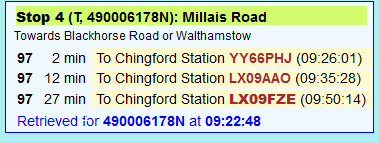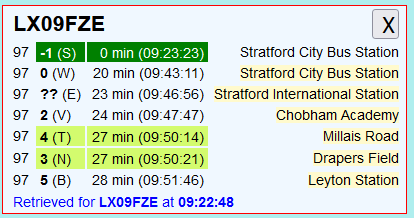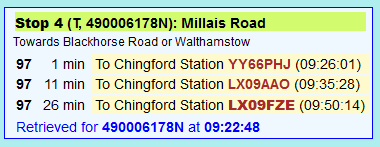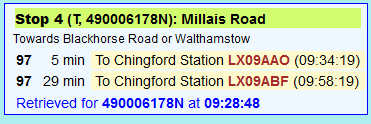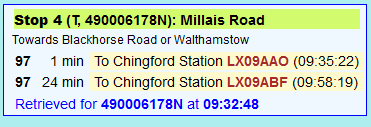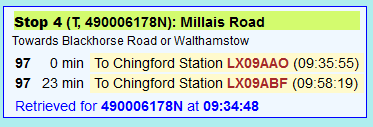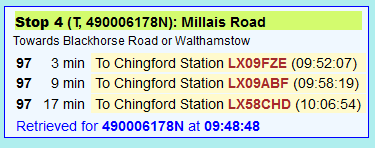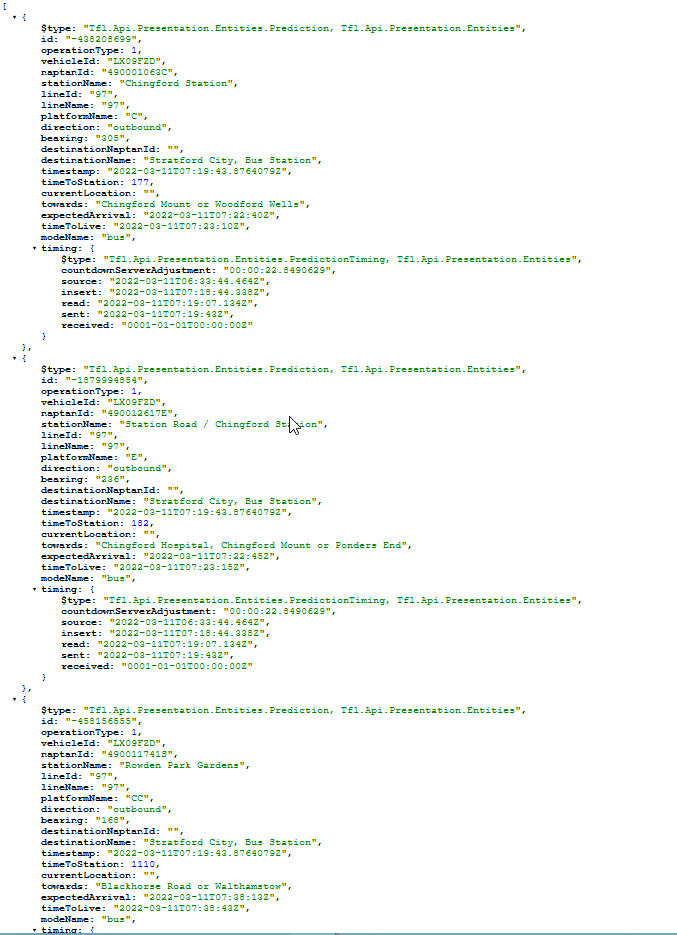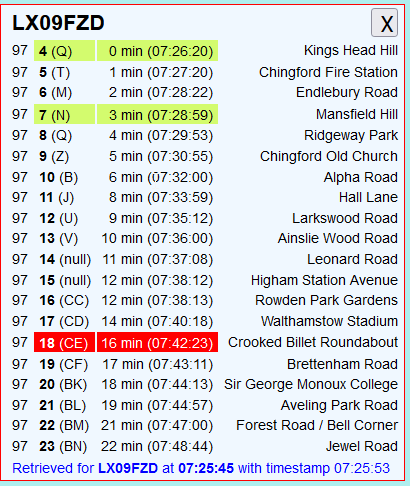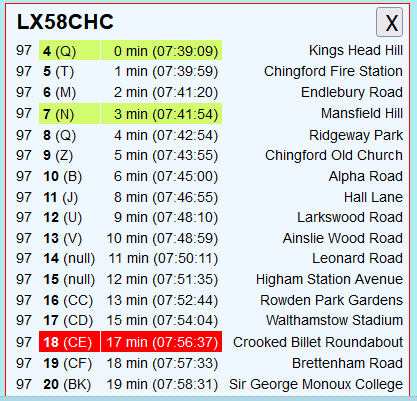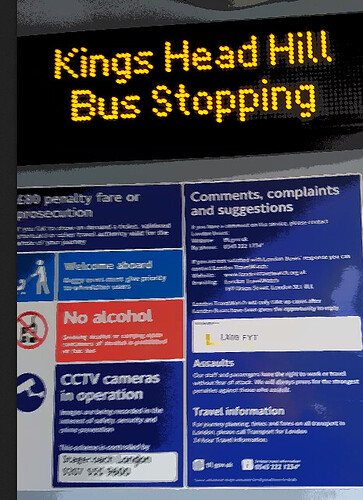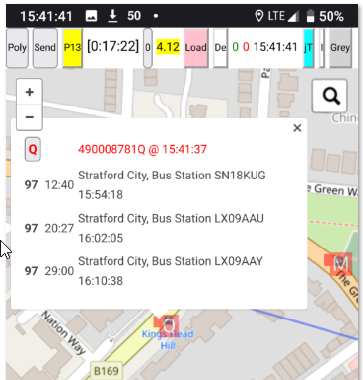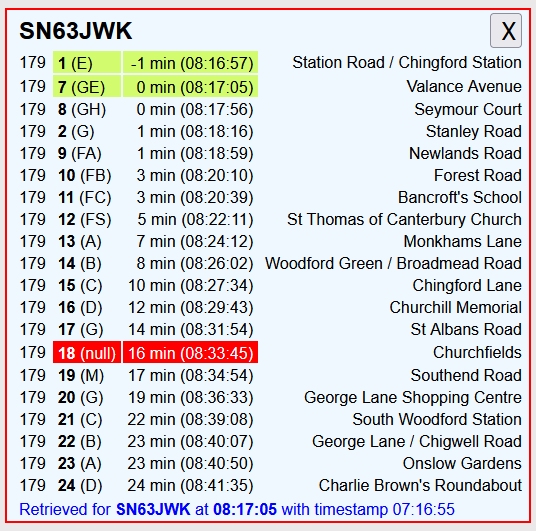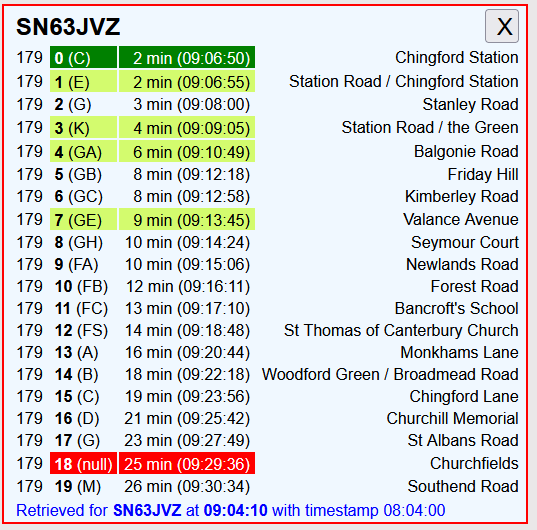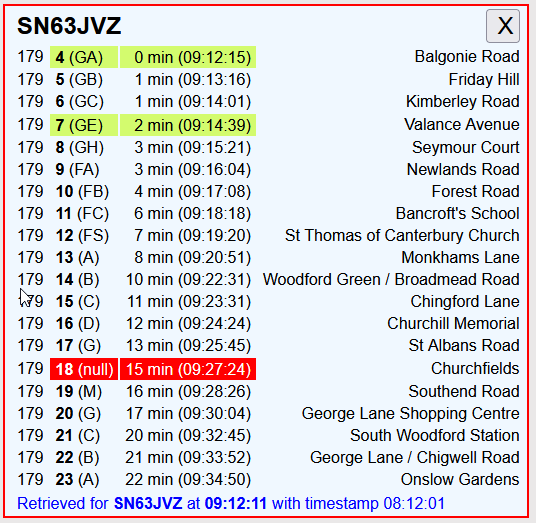@jamesevans
Doing some further tests, I find the problem isn’t only with route 97. Other buses starting from Chingford Station also have the problem.
313 is one of them. On many occasions I’ve gone to 490005182N at a time when no buses were predicted for 25 minutes or more but the timetable has said there will be one in 5 minutes. So I’ve gone to the stop and a bus has arrived within a minute or two of the scheduled time.
So I did a specific tests on route 313 (2nd September)
at 9:25, stop 490005182N was predicting a bus LTZ1180 in 16 minutes:

That continued to be predicted each minute up to 9:36:

but disappeared from predictions at 9:37:

Until 9:43 predictions continued to show the bus would not be coming:

But at 9:44 suddenly it reappears with only 1 minute to go:

Meanwhile, watch what happens to LTZ1001 due in 16 minutes: it continues to be predicted every minute, up to 9:53:
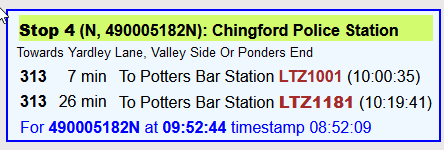
And then disappears at 9:54:

That bus also reappears with just 1 minute to go:

That pattern continued for subsequent buses on the route:
-
LTZ1181 disappeared at 09:11, with predicted 8 minutes to arrival, and reappeared at 9:20, with 1 minute to go
-
LTZ1182 disappeared at 09:32, with predicted 10 minutes to arrival, and reappeared at 9:41, with 2 minutes to go
Enough of that, let’s look back at what might have been happening when these buses disappear.
At 09:27, LTZ1180 was still on its way to the terminus, to arrive 3 minutes later (or at least, that’s what the API thought) :

and at that time it was expected to leave after just a 5 minute break:

3 minutes later though, it still seemed to be 3 minutes away from terminus:

but was still thought to be at its first outbound stop at 09:34:48 and was still showing predictions for the outbound stops:

At 9:35, predictions were still being shown on the assumption of leaving at 09:34:48:
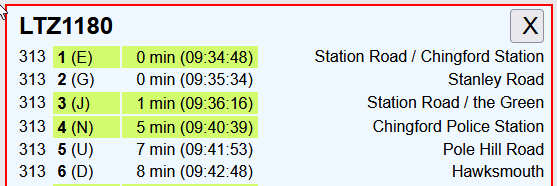
It’s perhaps at this time that “something or somebody” decided the incoming bus had not arrived late and therefore wasn’t going to leave on time. But instead of adding several minutes to the outbound predictions the bus was removed from predictions altogether.

A few minutes later, it seems that the same “something or somebody” failed to report that the bus was ready to leave, and apparently iBus isn’t yet sufficiently intelligent to deduce from the engine being switched back on, or its GPS location no longer being that of the terminus, is a strong indication that predictions should be reinstated.
It seems, furthermore, that even after leaving the terminus, a bus can travel a whole 3 stops (5 minutes) before iBus informs the API that it should restart predictions.
But anyway, unless something very serious has happened (like the bus getting a puncture, or the driver reporting sick, surely it’s obvious that the bus will usually leave a bit late rather than not at all. So its predictions should be delayed by a few minutes rather than falsely pretending that no bus would be coming at all.
This morning I also monitored the 212 which starts from Chingford
It looked good at first:
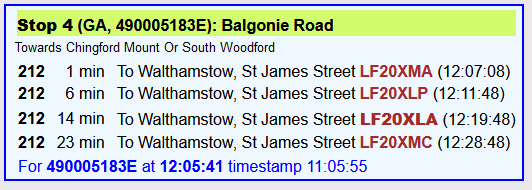
But 1 minute later LF20XLP disappeared with 5 minutes to go:

Then so did LF20XLA:

And so did LF20 XMC:

Unlike the 313, the missing buses never reappeared in any predictions for the monitored stop, but they did appear in predictions further along the route, so again these buses are managing to escape from the terminus without being picked up by the API for a long time thereafter.
But to a person looking at predictions, it will usually appear that the next bus is 10-15 minutes away, even though the actual bus will arrive in 1 to 8 minutes.
